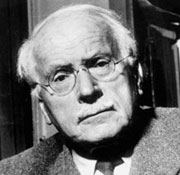Name Robert Eisler | ||
 | ||
Died December 17, 1949, Oxted, United Kingdom Books Man Into Wolf; An Anthropological Interpretation of Sadism, Masochism and Lycanthropy | ||
Robert Eisler (27 April 1882 – 17 December 1949) was an Austrian Jewish historian of art and culture, and Biblical scholar. He was a follower of the psychology of Carl Jung. His writings cover a great range of topics, from cosmic kingship and astrology to werewolves.
Contents
Life
Eisler was born in Vienna, then the capital of the Austro-Hungarian Empire. He attended the University of Vienna, the Sapienza University of Rome, and the National and Kapodistrian University of Athens. In World War I he served as an officer of the Austro-Hungarian Army.
Eisler had a position at the Austrian Historical Institute at the Vienna University. From 1925-31 he served as Assistant Director of the League of Nations Universities Interrelation Office in Paris and temporarily held a guest professorship at the Sorbonne. At that time he wrote on economics. Persecuted by the Nazi authorities after the Austrian Anschluss in 1938, he survived his internment in the Dachau and Buchenwald concentration camps. Before the outbreak of World War II he could take refuge in the United Kingdom, where he worked as a lecturer at the University of Oxford. He died in Oxted, Surrey.
Married to Lili von Pausinger, Eisler was the son-in-law of Austrian painter Franz Xaver von Pausinger (1839–1915). His wife's sister Elisabeth translated Johanna Spyri's classic children's book Heidi into English and was married to the American writer Charles Wharton Stork (1881–1971).
Theses
He advanced controversial theses on the Life of Jesus. One is about the concept of a political, rebellious and eschatological Jew as Jesus, in relation to the Zealot movement. In this he is the company of Joel Carmichael, In arguing for this position he used the work of Flavius Josephus in Slavonic manuscripts (the authenticity of which has been questioned). On the Messiah he discussed the afikoman in 1925, with ideas taken up much later. He made much of the Hebrew background of John the Baptist.
He was described by Gershom Scholem as 'an astonishing figure in the world of scholarship'. Another critic was Erwin Ramsdell Goodenough.
